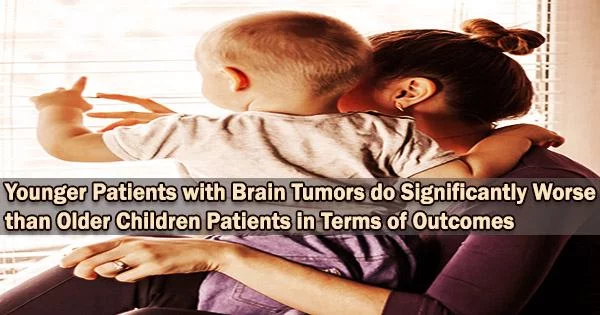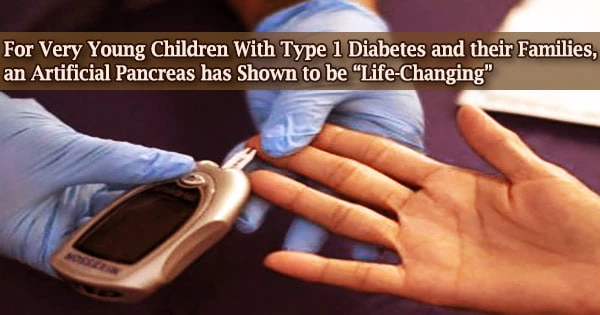Following a thorough data analysis, a researcher at the University of Colorado (CU) Cancer Center discovered that patients with brain tumors as young as birth to three months have a five-year survival rate that is around half that of children as young as one to nineteen.
Adam Green, MD, an associate professor of pediatric hematology/oncology at the CU School of Medicine, and his colleagues examined population-based data for over 14,500 kids with brain tumors aged 0 to 19 in recent research findings published in the Journal of Neuro-Oncology. The results were noticeably worse among the younger patients.
“It’s unusual to see infants or babies with brain tumors, but we do see them,” Green explains. “We generally just don’t have the same standards of treatment that we do for older children. We also know that infants can’t report their own symptoms like older kids often can.”
Analyzing nationwide cancer data
Data from the Surveillance, Epidemiology and End Results (SEER) Program of the National Cancer Institute, which covers more than a quarter of the U.S. population and reflects the wide diversity of the nation, was used by Green and his study colleagues.
The researchers separated the childhood brain tumor SEER data into three groups based on age: 0 to 3 months, 3 to 6 months, and 6 to 12 months. These three groups’ data were compared to information on brain tumors in adults aged 1 to 19.
What they discovered, Green says, is that “the types of brain tumors that babies get are different than in older patients, and that’s an important finding in and of itself. The most important findings we had were that the survival that babies have from brain tumors is worse than older kids for almost all of the types of brain tumors we study.”
Further data analysis revealed that the five-year survival rate for children aged 0 to 3 months is between 30 and 35%, whereas the five-year survival rate for children aged 1 to 19 is over 70%. The 5-year survival rate for infants aged 3 to 6 months and 6 to 12 months was also noticeably lower than that of older kids.
It’s unusual to see infants or babies with brain tumors, but we do see them. We generally just don’t have the same standards of treatment that we do for older children. We also know that infants can’t report their own symptoms like older kids often can.
Adam Green
Decreased survival rates for youngest brain tumor patients
This stark contrast in five-year survival rates “suggests that there may be just a lot of confusion and concern and reluctance in the pediatric neuro-oncology community to give these infants treatment or to perform surgery,” Green says.
“That may be a major cause of why these kids don’t do as well. Also, they’re more likely to present with metastatic disease when they do present with cancer, partly because they can’t report their own symptoms so their diagnosis may be delayed.”
Prenatal ultrasounds are frequently used to diagnose the tumors in the youngest patients since they exhibit a different biology than those in older children.
Symptoms are different between age groups as well. Older children may present with headaches or vomiting, whereas “babies obviously aren’t reporting headaches, but they may be inconsolably fussy over long periods of time or have a rapidly expanding head circumference that’s off the growth charts,” Green says. “They may not be meeting developmental milestones or may have abnormalities in the way their eyes move. The symptoms may be more subtle and not typical of the usual brain tumor symptoms in older children.”
Although there are recognized standards of care and treatment for pediatric brain tumors, medical professionals may be hesitant to utilize them on extremely young babies, which presents a special problem when treating the youngest kids with brain tumors.
“We have radiation-sparing regimens that we use for children under 5, and we know those work well, but when it gets down to patients this young, it may be coming from the parents or from parents and medical teams thinking that it’s going to be too toxic,” Green explains. “There may be concern that patients this young are not going to tolerate surgery.”
A goal of increased awareness
Green says he believes the study will have the immediate effect of alerting the medical community to the lower five-year survival statistics for infants under the age of one who have brain tumors. In turn, he hopes this awareness will lead to an increased willingness to apply standard-of-care therapies to the youngest patients with brain tumors.
“Taking the longer view, we still need to understand the biology of these tumors better,” Green says. “We have some understanding now of how a certain type of brain tumor in an infant is different than that same type of brain tumor in an older child and we may need dedicated, specialized treatment protocols for these youngest children.”
Also, because many brain tumors in the youngest patients already are metastatic at diagnosis, “hopefully it will drive home the message in the general pediatrics community that there needs to be vigilance for this possibility,” Green says.
“These tumors are rare, but primary care pediatricians and other folks in primary care need to be aware that these tumors can occur in infants. The biggest take-away is that these patients just aren’t getting the treatment that would be considered standard in older kids.”
















